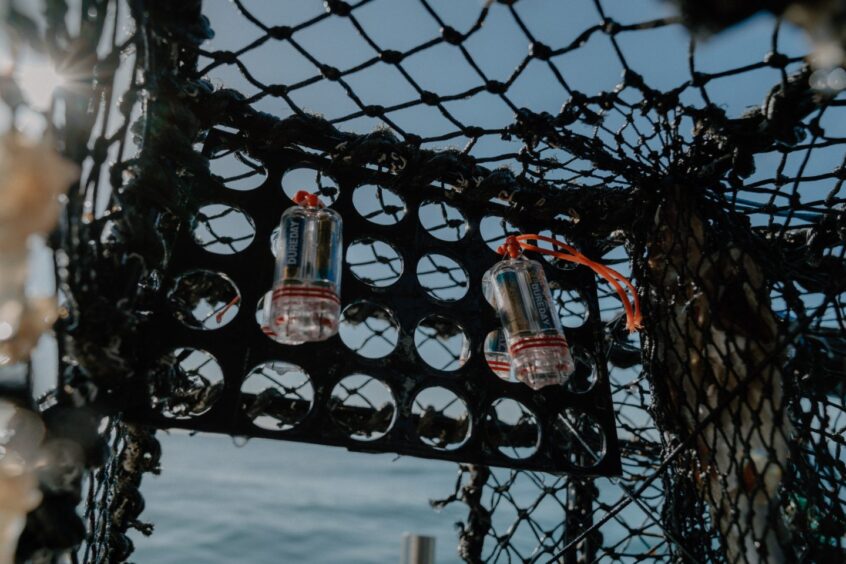
A new project aims to install “disco lights” around offshore wind farms to develop environmentally-friendly scallop fishing.
The Offshore Wind Evidence and Change Programme (OWEC) will support an 18-month research project into using underwater LED lights to attract scallops.
The LED lights, which use the same technology as disco lights, are placed into modified lobster and crab pots and based around offshore wind farms.
Early trials showed that scallops are drawn towards the lights, leading to an increase in the catch of up to 500%.
The technique is less invasive than the traditional practice of dredging along the seabed, which disturbs marine habitats and species.
The LED lights will be rolled out at a regional level by fishing crews in Scarborough, Bridlington and Whitby, who fish around and within offshore windfarms.
The team working on the LED lights project includes the Offshore Wind Industry Council, Ørsted and the University of Exeter, as well as Devon-based Fishtek Marine.
The company was nominated for the Earthshot Prize this year for devising a way to minimise the number of sharks being caught unintentionally during tuna fishing.
The project is one of five announced by OWEC as part of its 2024 funding round. Funding has also come from Natural England and the Fishmongers Guild.
RenewableUK consents and environment assistant manager Oscar Wilkie, who leads on this work for the Offshore Wind Industry Council, said: “As the offshore wind sector expands, it’s increasingly important that we find ways to work together with other industries at sea such as commercial fishing.
“We’re keen to ensure that the sea continues to be a shared space which benefits everyone, including nature and industry. We hope that this project will show that innovative environmentally-friendly fishing methods can be used to enable us to use the same areas of seabed.”
Nature inclusive designs
The OWEC programme is a £50 million initiative funding nature-positive acceleration of offshore wind development.
It is a coalition of 26 organisations led by the Crown Estate, alongside programme partners, the Department for Energy Security and Net Zero and the Department for Environment, Food and Rural Affairs.
Nature-inclusive designs are becoming more important to offshore wind developers. With Scottish projects facing a slow consenting process and the government saying applications should be as strong as possible, environmental mitigation can help developments progress quicker.
The Scottish Offshore Wind Energy Council (SOWEC) called on developers to include features such as fish hotels, structures that imitate reefs, and holes in the monopiles to promote water flow to promote biodiversity
One project, the Salamander floating offshore wind farm, has been monitoring the presence of fish to better understand how it, and other floating wind farms, affect their behaviour.
And Ocean Winds, which is building the 882MW Moray West offshore wind farm near the Moray Firth, implemented several initiatives during development, such as “low order deflagration” techniques as a less-intrusive means of removing unexploded ordnance.
The Moray West project recently welcomed a seal to the construction site, demonstrating how offshore wind farms and marine life can co-habit.
Programme lead for OWEC Rachael Mills added: “The Crown Estate’s ambition is to create the world’s most attractive and sustainable marine economy, so it’s important we explore opportunities where balance can be found among the interests of the many industries using the seabed.
“By researching this innovative and sustainable scallop fishing technique, we are taking an important step towards better co-location between fisheries and the offshore wind industry. This forms part of our strategy to manage this vital resource effectively to deliver long-term value for the nation.”
Recommended for you

